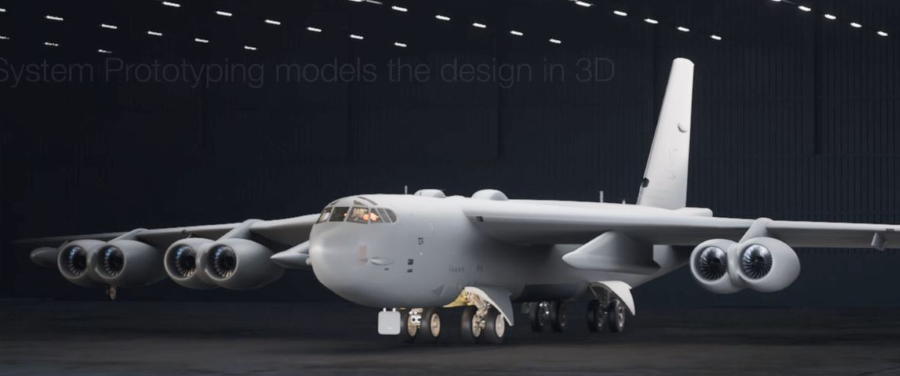Once they receive their new Rolls Royce F130 engines, B-52Hs will become B-52Js, according to the Air Force’s fiscal 2024 budget documents.
The designation resolves a question that had been debated for several years, as the B-52 undergoes some of the most significant improvements in the H model’s 61-year service life.
“Any B-52H aircraft modified with the new commercial engines and associated subsystems are designated as B-52J,” the Air Force said in justification documents for its 2024 budget request.
The service had been considering various designations for the improved Stratofortress, because in addition to new engines, the B-52 will also be receiving a new radar, as well as new communications and navigation equipment and weapons, among other improvements intended to keep it credible and capable through the 2050s.
Given the number of major changes, Global Strike Command had considered using interim designations—“J” model aircraft would have then become B-52Ks.
One of the improved weapons the B-52 was supposed to get was the hypersonic AGM-183 Air-Launched Rapid Response Weapon (ARRW), but in the 2024 budget, the Air Force said it’s moving to “close out” the program after a couple more tests and shift its emphasis to the Hypersonic Attack Cruise Missile (HACM).
The B-52 re-engining project name has also evolved from the Commercial Engine Replacement Program (CERP) to CERP RVP, for Rapid Virtual Prototyping, the Air Force said in its budget request.
The re-engining effort was launched as a mid-tier acquisition in order to save time and get capability sooner. The program will become a Major Capability Acquisition at the end of the RVP effort, the Air Force said.
The upgrades will also open the door to other changes, USAF noted.
“As B-52 CERP brings additional capability to the B-52, emerging security/certification requirements (nuclear hardening, cyber security, program protection, etc.) will also need to be addressed. Several concurrent aircraft upgrades during the B-52 CERP may necessitate temporary facilities or facility upgrades/ modifications.”
The Air Force is asking for nearly $3 billion in B-52 procurement across the future years defense plan, starting with a modest $65.82 million in 2024 but ramping up to over $1.1 billion each in 2027 and 2028.
Of the overall amount, the Radar Modernization Program alone claims $845.9 million, peaking in ’27 at $271.95 million. Separately—not included in the procurement account—research, development, test, and evaluation associated with the Radar Modernization Program is requested at $371 million, ending in 2026. The RMP procurement funding is to procure 74 radar kits, three training systems kits, and two engineering and manufacturing development kits.
The new radar is a variant of the Raytheon AN/APG-79, an active, electronically-scanned array (AESA) radar used on the Navy’s F/A-18 Super Hornet fighter. It replaces the APG-166, which the Air Force says suffers from severe “vanishing vendor” issues and parts problems that will make the radar “unsupportable” before 2030.
Besides a dramatic improvement in maintainability, the AESA will add significant new capabilities in search, ground mapping, and electronic warfare. The new radar’s physical footprint is also much smaller than the system it replaces, creating growth capacity in the front of the aircraft. The B-52’s nose-mounted electro-optical blisters will be removed and a new radome installed with the new radar.
The re-engining program is funded for $2.56 billion, all in the RDT&E budget, peaking at $650.5 million in 2025. The program seeks to replace the original-equipment Pratt & Whitney TF33 engines with Rolls Royce F130s. The change is expected to eventually pay for itself through 30 percent better fuel efficiency and elimination of engine overhauls, as the F130 will not need an overhaul for the duration of its expected life on the B-52 wing.
“Along with the new engines, CERP will replace associated subsystems, such as engine struts and nacelles, the electrical power generation system, and cockpit displays,” the Air Force said. “The development, production and installation of new engines and related subsystems will replace the legacy equipment on all 76 B-52H aircraft.”
Including monies expended so far, the total cost of the B-52 CERP Middle Tier of Acquisition effort will be $1.32 billion, including RDT&E, the Air Force said.
The Air Force expects B-52Js with both new engines and new radars to be available for operational use before the end of the decade.
